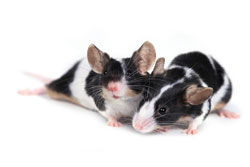Planning for teaching using animals

Before applying for a licence and planning a program using animals, be clear on the educational benefits you are hoping to achieve:
- What are the benefits for the students?
- How will you measure your success in delivering the benefits?
- What does the exercise mean for the animals involved?
If your program could be run without the need for animals, you are required by law not to use animals.
Only when you are convinced that animals are essential for your educational objectives may you apply to the Animal Ethics Committee (AEC) for approval.
The role of the AEC is to make sure the use of animals is justified by the educational outcome, meaning that:
- the impact on animals used is minimised AND
- the educational outcome is assured.
The teacher's job is to provide the information to the AEC that it needs to make that decision.
The AEC will be considering the application in terms of the 3Rs:
- replacement
- reduction
- refinement
By working through these 3 principles when applying to the AEC, you will find it easier to present all the information they need to know.
Review our preparing the classroom checklist to work through your application according to the 3Rs.
Replacement
Education using animals is not related to new discovery but will demonstrate well-known scientific facts.
Preference should always be given to programs that do not require animals. Do a thorough search of educational resources to find activities that successfully replace the use of animals and see how successful they were at achieving their objectives.
For example, a video demonstration, a model or mannequin of an animal or a computer simulation can provide the same educational outcome via a different process.
Have the students experiment on themselves and each other, such as by taking weights and measurements. You'll find lots of great ideas on humane education on the MSPCA-Angell website.
Reduction
The aim is to use as few animals as possible to reduce the impact.
Look for ways to use fewer animals, such as:
- sharing observations with other classes
- visiting the zoo
- making a video using animals to use for future presentations.
Refinement
The AEC performs a cost-benefit analysis of the program to decide whether the use of animals is justified by the educational outcome.
You can tip the balance in favour of your program by:
- minimising the 'cost' to (effect on) the animals
- maximising the benefit (educational outcome).
Minimising the effect on the animals means making the experience as pleasant for them as possible. This starts with the selection of species — for example, do you need a highly sensitive rabbit for your program or would a visit from a well-socialised puppy do the trick?
The housing and care of the animals needs to be detailed in your application and every opportunity to increase their comfort and security should be taken.
What happens next — fate of the animals
You may have a great idea for rehoming your animals once the teaching activity is over. You need to arrange and confirm the new home(s) before starting the activity, so that you are not left with surplus animals.
If returning the animals to the supplier is an option, make sure you know what will happen to the animals afterwards. If animals are euthanased as soon as you finish your activity, that must be factored into the cost–benefit calculation.
Animals should not be offered to students for rehoming without express permission from parents and should always be accompanied by a comprehensive information pack explaining:
- care
- nutrition
- housing
- possible zoonoses (diseases transmissible to humans)
- veterinary care
- preventative treatments.
Social species (such as chickens, mice, rabbits, guinea pigs, fish) should never be rehomed as single animals.
Remember that early-rising, non-egg producing, noisy roosters are not at the top of any family's (or local council's) list of desirable pets.
Take a responsible approach to the fate of your animals and make sure they are treated humanely.